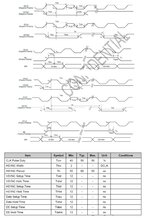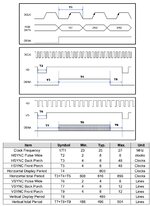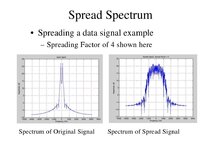flote21
Advanced Member level 1
Hello guys,
I have designed a display board to interface LVDS signal coming from a camera to parallel RGB interface LCD screen input.
The displayboard does not have any EMI problem. However when i connect it to the LCD screen thought a flat cable, a big EMI interference is coming out of the flat cable. The frequency of this EMI is at 25MHz and it has harmonics every 25MHz up to 700MHz. The 25 MHz is the pixel clock of the RGB data
I tried to reduce the EMI changing the values of the series termination resistors, i added more bypass capacitors, i place finger contacts to have more direct gnd contacts between the LCD screen and the display board....and i got some improvements but still the EMI levels are high.
Any idea to improve the current EMI results?
Thanks in advance.
Greetings
I have designed a display board to interface LVDS signal coming from a camera to parallel RGB interface LCD screen input.
The displayboard does not have any EMI problem. However when i connect it to the LCD screen thought a flat cable, a big EMI interference is coming out of the flat cable. The frequency of this EMI is at 25MHz and it has harmonics every 25MHz up to 700MHz. The 25 MHz is the pixel clock of the RGB data
I tried to reduce the EMI changing the values of the series termination resistors, i added more bypass capacitors, i place finger contacts to have more direct gnd contacts between the LCD screen and the display board....and i got some improvements but still the EMI levels are high.
Any idea to improve the current EMI results?
Thanks in advance.
Greetings


